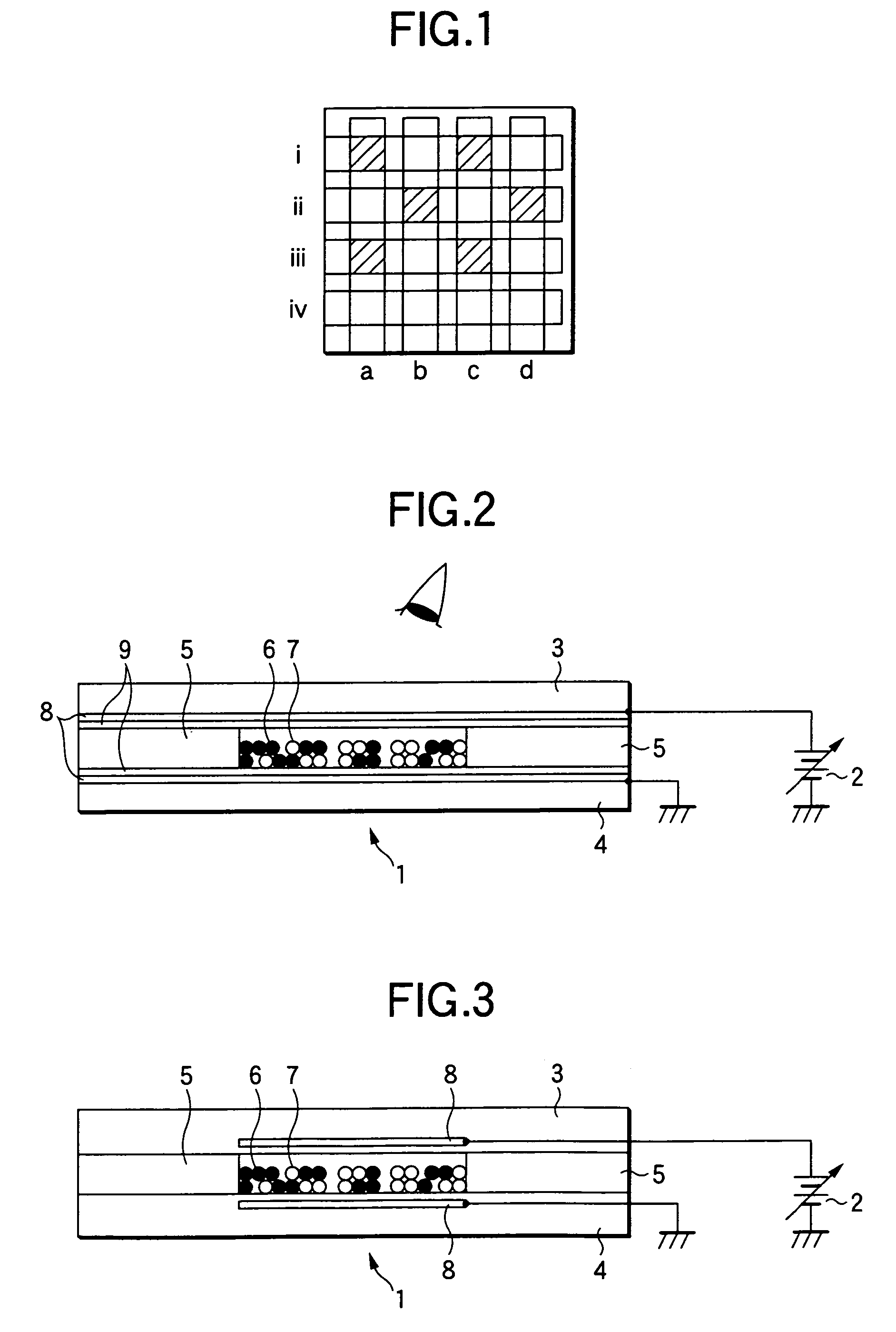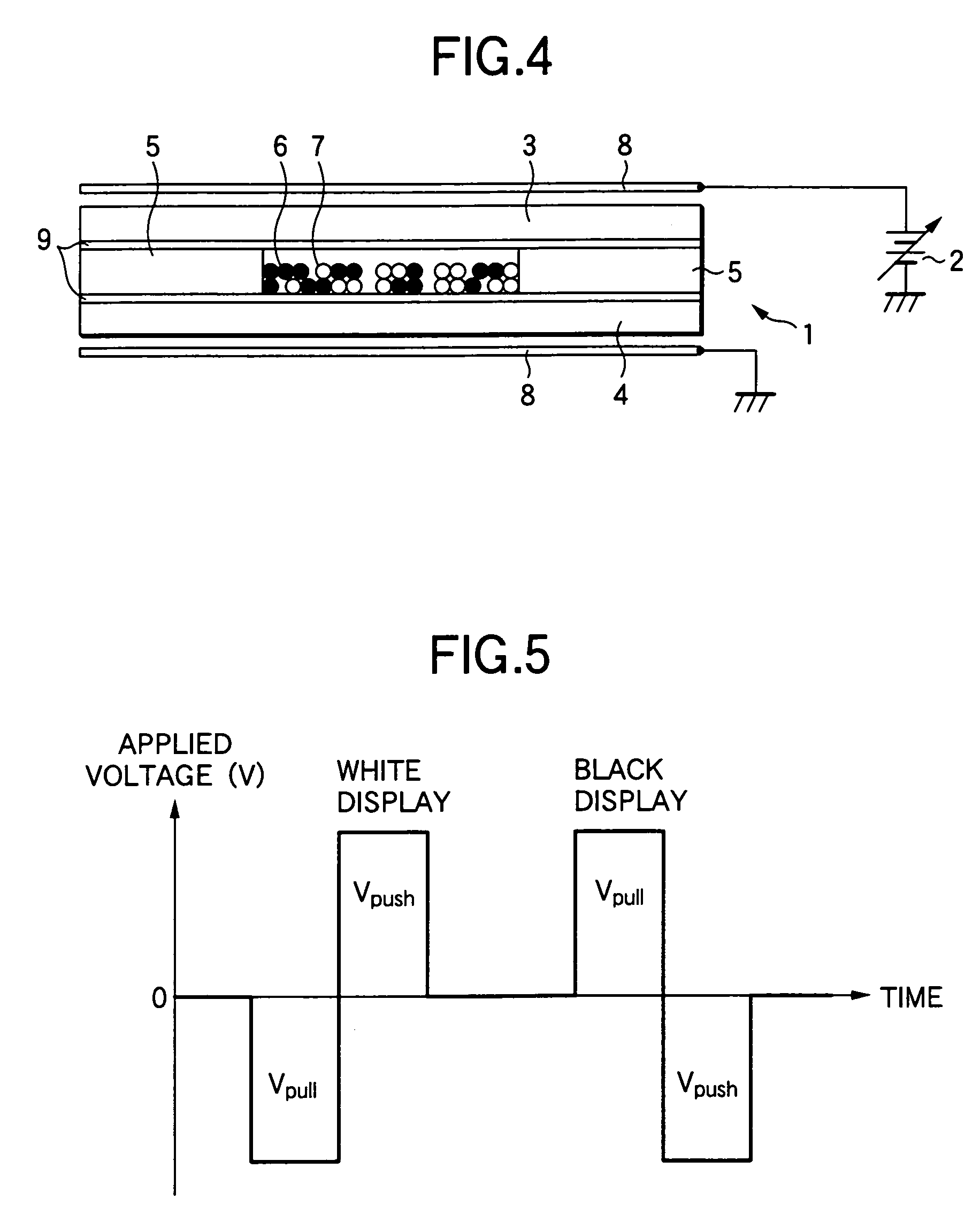Display medium driving method
- Summary
- Abstract
- Description
- Claims
- Application Information
AI Technical Summary
Benefits of technology
Problems solved by technology
Method used
Image
Examples
embodiments
[0118]The preferred embodiments of the present invention are described next below. It should be noted that unless otherwise stated “parts” as used below refers to “parts by weight.”
embodiment 1
[0131]Using the display medium prepared as described in comparison 1 above, a +500V rectangular wave voltage pulse is applied to the ITO electrode of the display substrate to turn the display substrate entirely white. A positive rectangular wave voltage pulse is then applied to the ITO electrodes of the display substrate for 25 msec, and immediately thereafter a negative rectangular wave voltage pulse of the same absolute value as the above positive rectangular wave voltage pulse is applied to the ITO electrodes of the display substrate for 25 msec. The voltage supply is then stopped and the image density on the display substrate is measured using a densitometer (X-Rite 404A, X-Rite Co.).
[0132]A +500V rectangular wave voltage pulse is then applied to the ITO electrodes of the display substrate to turn the entire display substrate white. The above procedure is then repeated while gradually increasing the absolute value of the voltage pulse.
[0133]A −500V rectangular wave voltage pulse...
embodiment 2
[0136]Using the display medium of embodiment 1 above, a +500V rectangular wave voltage pulse is applied to the ITO electrode of the display substrate to turn the display substrate entirely white. A +200V rectangular wave voltage pulse is then applied to the ITO electrodes of the display substrate for 25 msec, and immediately thereafter a −200V rectangular wave voltage pulse is applied to the ITO electrodes of the display substrate for 25 msec. The voltage supply is then stopped and the image density on the display substrate is measured using a densitometer (X-Rite 404A, X-Rite Co.). Applying the above pulse pair and density measurement are then repeated. The results are shown in FIG. 10.
[0137]As shown in FIG. 10, black image density gradually increases as the number of time the drive voltage pulse is applied to the display medium increases, and is substantially saturated after five times. Note that in FIG. 10 the density (1.0) obtained by applying a −200-V pulse only once for 25 mse...
PUM
 Login to View More
Login to View More Abstract
Description
Claims
Application Information
 Login to View More
Login to View More - R&D
- Intellectual Property
- Life Sciences
- Materials
- Tech Scout
- Unparalleled Data Quality
- Higher Quality Content
- 60% Fewer Hallucinations
Browse by: Latest US Patents, China's latest patents, Technical Efficacy Thesaurus, Application Domain, Technology Topic, Popular Technical Reports.
© 2025 PatSnap. All rights reserved.Legal|Privacy policy|Modern Slavery Act Transparency Statement|Sitemap|About US| Contact US: help@patsnap.com



